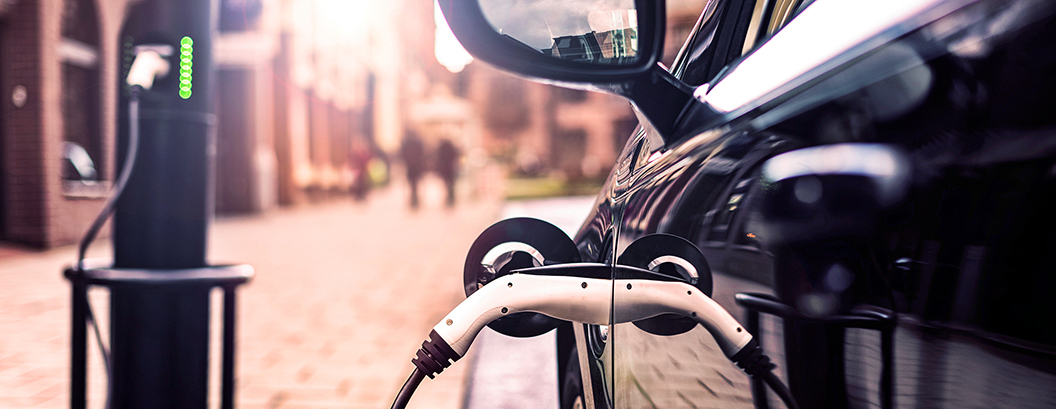Types
There are different types of electric vehicles: hybrid electric vehicles (HEV), plug-in hybrid electric vehicles (PHEV) and battery electric vehicles (BEV). All three varieties of electric vehicles use electricity for propulsion, but there are differences in how they operate and their respective powertrains and range.
Hybrid electric vehicles combine a conventional internal combustion engine with an electric propulsion system. The internal combustion engine does most of the work, while the electric motor assists the engine, with its main purpose being to increase the fuel economy.
Plug-in hybrids can be an excellent choice for consumers who need or want additional range. For those who need to drive very long distances on a frequent basis, a plug-in hybrid offers the flexibility of being able to quickly fill up with gasoline where charging stations may not be available. Plug-in hybrids allow their owners to drive entirely on electricity on the days when they don’t exceed the vehicle’s all-electric range yet have the combustion engine there when they need it.
Battery electric vehicles, or BEVs, are often just called electric vehicles. Most battery electric vehicles come standard with a 120-volt Level 1 charger, which can take very long to recharge the vehicle. That’s because battery electric vehicles have much larger batteries than HEVs or PHEVs do. There are so few moving parts in a battery electric vehicle that very little maintenance is required. There are no oil changes or tune-ups needed, and the savings from not having these maintenance expenses can add up to significant savings over the lifetime of the vehicle.
Batteries
Today’s EVs use Lithium-ion batteries, the same type of batteries currently used in most portable consumer electronics because of their high energy per unit mass relative to other electrical energy storage systems. EV growth is driving battery costs down.
Vehicle types
Some EV models are only available in certain states; however, some unavailable EVs can be ordered through a local dealer.
The following are the vehicle types and numbers available by 2023 according to the Electric Power Research Institute:
- SUV/Crossover: 56.
- Sedan: 30.
- Compact/Hatchback: 13.
- Ultra-luxury/Limited Edition: 11.
- Minivan/Wagon/Van: 6.
- Pickup truck: 6.
- Sports car: 3.
- Subcompact: 1.
- Coupe: 1.
Charging
Electric cars don’t necessarily charge at the same rate, and bigger battery packs usually mean more time to charge. Most drivers with a driveway or a garage prefer the convenience of charging at home. You simply plug into an up-to-date standard 120-volt household outlet, using the cord that comes with the car. This is called Level 1 charging. It’s the simplest and most economical home-charging solution because it requires no other equipment or installation. Charging at Level 1 delivers roughly 3 to 5 miles of range per hour.
For faster home charging, you can install a dedicated 240-volt charging station. It’s an appliance, like an electric clothes dryer. This is called Level 2 charging. Charging at Level 2 delivers roughly 8 to 24 miles of range per hour or more, depending on the car and the charging station.
Level 1 and Level 2 charging is available in public and at some workplaces. For even faster charging, a growing number of DC Fast charging stations are available in strategic locations nationwide along highway corridors and near shopping centers. DC Fast charging cannot be installed at home. Most (but not all) electric cars are equipped to accept DC Fast charging, though all can charge at Levels 1 and 2. Fast-charging speed varies by car and installation.
Source: EPRI, 2020
Want to learn more?
Join us Thursday, July 22 at noon for our program Charging Ahead: The state of EVs in 2021, presented by Marc Shkolnick, manager of Energy Services at LES, and Jamie Dunckley, senior project manager at EPRI. Join the meeting virtually at https://zoom.us/j/99863895576 or by calling in: +1 312 626 6799 | Webinar ID: 998 6389 5576.
Get a sense of the current state of EVs locally and across the country as EV expert Jamie Dunckley dives into the numbers to pull out some interesting trends and observations. The presentation will be followed by an audience Q&A, so come prepared. Don’t miss the opportunity to ask these energy experts your burning EV questions.
You can also view last year’s Sustainable Living Online Festival webinar, What to consider when buying an electric vehicle below:


Recent Comments